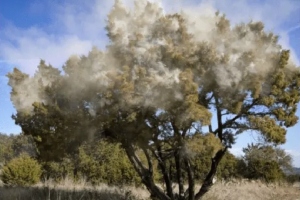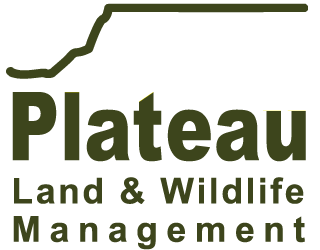Seasons – Winter 2025

As we step into the new year, it’s the perfect time to focus on winter wildlife management activities that set the stage for a thriving habitat in the months ahead. In this edition of Seasons, we’re sharing practical tips and insights for landowners to tackle during the cooler months. We’re also thrilled to highlight the latest episode of Your Texas Land, featuring an inspiring conversation with Texas Wildlife Association CEO, Justin Dreibelbis, about empowering landowners across the state.
Don’t forget to mark your calendars—our highly anticipated webinar and in-person event series just kicked off, offering invaluable guidance for those transitioning to wildlife management. Plus, we’re featuring a must-read guest article from Braun & Gresham on the alarming rise of fraudulent deeds and how to protect your property. There’s something for every Texas landowner in this packed edition—let’s dive in!
Until next Seasons,
The Plateau Team
What to do in Winter: Activities and Beyond
- Landowners in Texas can focus on habitat improvement, like removing invasive brush species such as cedar, and creating brush piles for wildlife cover.
- These months are also ideal for cleaning out or installing nest boxes for bluebirds, titmouse, and woodpeckers.
- Plan ahead for your Spring Breeding Bird Survey.
- Wildlife monitoring is another key focus during this time.
- Consider deploying game cameras or conducting a thermal drone survey to assess wildlife populations and habitat usage.
- Feral hog trapping and predator management can also help maintain ecological balance before the busy spring season.
 Upcoming deadlines to watch for in 2025 include ensuring all required activities for Wildlife Management Tax Valuation are completed and documented by the reporting deadline, typically April 30 in most counties. If you’re transitioning to Wildlife Management from traditional agricultural or timber valuation, make sure your 1-d-1 Open Space Application is submitted to the county appraisal district by April 30, 2025.
Upcoming deadlines to watch for in 2025 include ensuring all required activities for Wildlife Management Tax Valuation are completed and documented by the reporting deadline, typically April 30 in most counties. If you’re transitioning to Wildlife Management from traditional agricultural or timber valuation, make sure your 1-d-1 Open Space Application is submitted to the county appraisal district by April 30, 2025.
It’s also a good time to review your wildlife management plan to ensure compliance and effectiveness. By focusing on these activities and keeping deadlines in mind, you’ll set your property up for success in the year ahead.
On the Frontlines: Legislative Insights with Texas Wildlife Association
Cassie Gresham takes a closer look at the legislative initiatives affecting Texas landowners with special guests Justin Dreibelblis from Texas Wildlife Association and Shane Kiefer from Plateau Land & Wildlife. The discussion covers various topics including Texas Parks and Wildlife funding, groundwater ownership, renewable energy development, and wildlife disease management.
Tune in to understand the implications of the upcoming legislative session on your land, stay informed about new bills, and learn about advocacy efforts to safeguard landowner rights and interests.
Upcoming Winter Webinar and In-Person Event Series

Whether you’re already a Plateau customer of someone that wants to learn more about Wildlife Management, everyone is invited to our FREE Wildlife Management Winter Webinar series & In-Person Events.
By implementing wildlife management practices on your land, you can enjoy a range of benefits that enhance the health and productivity of your property. These can include habitat improvement, increased property value, reduced maintenance, and more time for recreation. You also get to maintain your existing low property tax rates by transitioning from Ag or Timber Valuation to Wildlife Management.
Learn how a personalized wildlife management plan can help you achieve your property goals and get ready to take the first step towards a healthier more thriving ecosystem.
Guest Feature: Fraudulent Deeds, Serious Impacts – What Every Landowner Should Know
Blog by N. Cahil Murchison, Attorney & Counselor, Braun & Gresham
An unsettling trend has recently emerged in the real estate and property law world. More and more landowners have discovered they are victims of fraud. Specifically, there have been fraudulent deeds filed regarding their land. This article will briefly detail what a fraudulent deed is and how they affect landowners, how to mitigate your liability against fraudulent deeds, and what to do if you are a victim of fraud by deed.
Fraudulent Deeds
A deed is fraudulent if it tries to do something one of the parties involved does not have the authority to do. For example, Jane files a deed which conveys to John a 100-acre farm. However, Jane does not own or have any rights to the farm. Therefore, the deed is fraudulent. Another way is when someone forges signatures or other important information on deeds and then files them in the real property records for their county.
But what happen when someone actually has the rights to that farm Jane just tried to convey without legal authority? What happens to that person and their rights? What if the farm is located in Texas, but the true owner lives in California and doesn’t see the land that often? John could come onto the land and begin making changes without either party knowing the better.
Mitigating your Liability
John, and buyers like him, should always have a title company do a title exam on the property before purchasing it. Title exams consist of an examiner – sometimes an attorney, sometimes not – combing through the property’s title to make sure there are no “surprise” interests in the land that would incumber the desired transfer.
Title insurance can be purchased as well. Title insurance policies provide protection against third-party claims that do not appear in the title exam after the real estate deal has closed. Title exams and insurance are a great way to make sure you are a) buying what you think you are buying; b) discovering issues you wish to avoid/solve; and c) insulating yourself from future risks and costs.
A quick piece of practical advice: do not simply rely on what the County Appraisal District website tells you. It can be a great starting point and resource for basic information; however, the website is not always the full and complete picture of the title to your property. Do not be completely satisfied until you have a title examination conducted on the property. Better safe than sorry is truly the motto when it comes to title.
If You’re a Victim
 If you and your property are the victim of a fraudulent deed, there are both criminal and civil remedies you can seek.
If you and your property are the victim of a fraudulent deed, there are both criminal and civil remedies you can seek.
To seek criminal penalties, contact the local Sheriff’s Office or police department in the county the land in question is located. They will do an investigation, then recommend charges to the County District Attorney.
Civil remedies can be obtained by reaching out to a law firm who has experience in landowner and property issues and filing a lawsuit. Braun & Gresham is such a firm! They can help you obtain remedies for causes of action such as fraud and a suit to quiet title.
Conclusion
Fraudulent deed filings are happening more and more frequently as of late. Luckily, there are actions you can take to mitigate your risk from such an event affecting you. If you are a victim of a fraudulent deed, make sure to speak with both law enforcement and a civil attorney to cover both criminal and civil remedies.
For more information, contact Braun & Gresham at [email protected] or 512-894-5426.
News for Landowners
Top Blogs and Podcast Episodes of 2024
Article by Tiffany Lashmet for the Texas A&M Agrilife Extension

Each year, we take a look back at our most popular content of 2024 across our various platforms. Here are our five most downloaded episodes of 2024.
#180 Shane Kiefer (Small Acreage Landowner Considerations) Our most popular consideration this year was our discussion with Shane Kiefer from Plateau Land & Wildlife on small acreage landowner considerations. It was a great discussion about what folks should consider when purchasing or owning properties. From property taxes to fencing, surveys to leases, Shane brought extremely practical and important considerations.
U.S. Fish and Wildlife proposes ESA listing for Monarch butterfly
Article from Texas Farm Bureau

The U.S. Fish and Wildlife Service (FWS) proposed listing the Monarch butterfly as threatened under the Endangered Species Act and included species-specific protections and flexibilities to encourage conservation.
“Today, the eastern migratory population is estimated to have declined by approximately 80%,” FWS said. “The western migratory population has declined by more than 95% since the 1980s, putting the western populations at greater than 99% chance of extinction by 2080.”
‘Cedar Fever’ Season Begins in Texas
Article by Jonathan Stuckey, Texas A&M AgriLife Communications for Morning Ag Clips

COLLEGE STATION, Texas — It’s time for Texans to brace for ‘cedar fever’ season once again. Cedar fever is an allergic reaction to the pollen released by mountain cedar trees and, unfortunately, you don’t have to be allergic to the pollen for it to affect you.
In Texas, what is known colloquially as mountain cedar is actually Ashe juniper, making cedar fever especially irritating in the Hill Country west of Interstate 35, where Ashe juniper trees are the dominant canopy cover alongside oaks and a few other species.
Big Thicket National Preserve Seeks Your Help In Planting Trees And Grasses
Article from National Parks Traveler
 Big Thicket National Preserve in Texas invites you to participate in the park’s winter planting events. Volunteers can join park staff and partners to plant longleaf pine trees and native grasses in January and February in the preserve’s Big Sandy Creek Unit.
Big Thicket National Preserve in Texas invites you to participate in the park’s winter planting events. Volunteers can join park staff and partners to plant longleaf pine trees and native grasses in January and February in the preserve’s Big Sandy Creek Unit.
“Part of the longevity of Big Thicket is the continued work on restoring the longleaf pine savannah ecosystem, and the connection volunteers can get from seeing their work grow each year,” said Superintendent Wayne Prokopetz.






Sorry, the comment form is closed at this time.